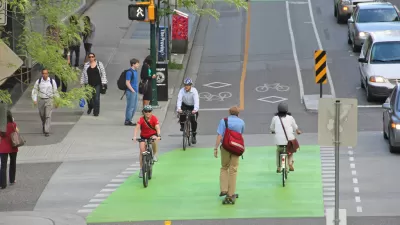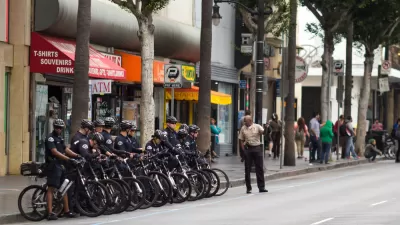You get what you pay for, goes the old saying, and a new study out of New Zealand makes the case that when it comes investing in bike infrastructure, it's best to invest in quality.

For every dollar spent to build new separated bike lanes, cities could save as much as $24 thanks to lower health care costs and less pollution and traffic, according to a new study from researchers in New Zealand," according to Adele Peters.
However, small investments in bike infrastructure can actually be a setback for biking's mode share. According to Peters, "[in] cities dominated by cars, a small increase in cycling tends to lead to more biking injuries and deaths, making other people more afraid to ride. The way to overcome that problem, the researchers found, is to make a bigger commitment to better bike lanes."
Peters briefly describes the ground this study breaks as it joins a growing body of research about the many benefits of bike infrastructure: "this study may be the first to look at how different types of bike infrastructure investments pay cities back later."
FULL STORY: The Cities That Spend The Most On Bike Lanes Later Reap The Most Reward

Alabama: Trump Terminates Settlements for Black Communities Harmed By Raw Sewage
Trump deemed the landmark civil rights agreement “illegal DEI and environmental justice policy.”

Planetizen Federal Action Tracker
A weekly monitor of how Trump’s orders and actions are impacting planners and planning in America.

The 120 Year Old Tiny Home Villages That Sheltered San Francisco’s Earthquake Refugees
More than a century ago, San Francisco mobilized to house thousands of residents displaced by the 1906 earthquake. Could their strategy offer a model for the present?

LA’s Tree Emergency Goes Beyond Vandalism
After a vandal destroyed dozens of downtown LA trees, Mayor Karen Bass vowed to replace them. Days later, she slashed the city’s tree budget.

Sacramento Leads Nation With Bus-Mounted Bike Lane Enforcement Cameras
The city is the first to use its bus-mounted traffic enforcement system to cite drivers who park or drive in bike lanes.

Seattle Voters Approve Social Housing Referendum
Voters approved a corporate tax to fund the city’s housing authority despite an opposition campaign funded by Amazon and Microsoft.
Urban Design for Planners 1: Software Tools
This six-course series explores essential urban design concepts using open source software and equips planners with the tools they need to participate fully in the urban design process.
Planning for Universal Design
Learn the tools for implementing Universal Design in planning regulations.
Ada County Highway District
Clanton & Associates, Inc.
Jessamine County Fiscal Court
Institute for Housing and Urban Development Studies (IHS)
City of Grandview
Harvard GSD Executive Education
Toledo-Lucas County Plan Commissions
Salt Lake City
NYU Wagner Graduate School of Public Service




























